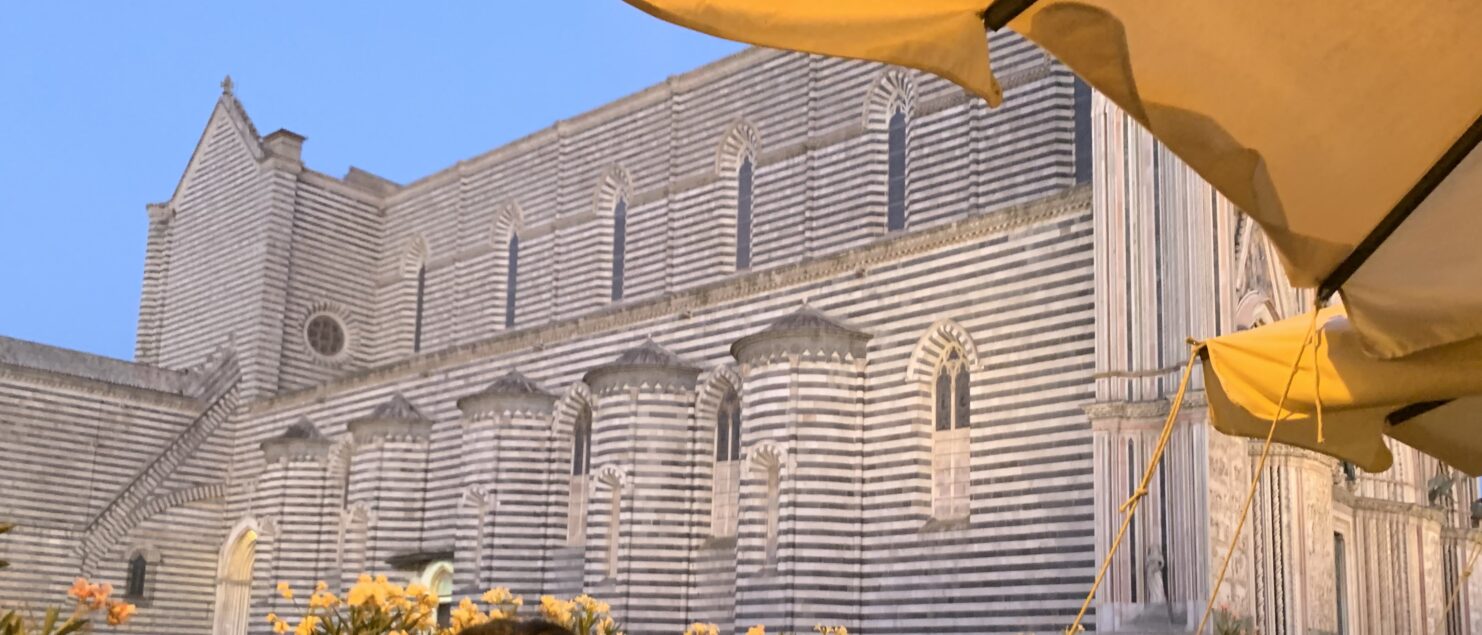Visitor Perspective, by Palazzo Misciattelli: #1, the Duomo
In honour of the upcoming 2025 Jubilee, Palazzo Misciattelli is delighted to introduce a series of posts on all the sites included in the Orvieto Carta Unica, from the visitor’s perspective!
#1, the DUOMO
Discover the Duomo of Orvieto: A Journey Through History and Art
Nestled in the charming town of Orvieto, in the heart of Italy’s Umbria region, the Duomo of Orvieto stands as a testament to Gothic grandeur and medieval artistry. This cathedral, with its stunning façade and richly decorated interior, is a must-visit for travelers seeking to delve into Italy’s rich cultural and architectural heritage.
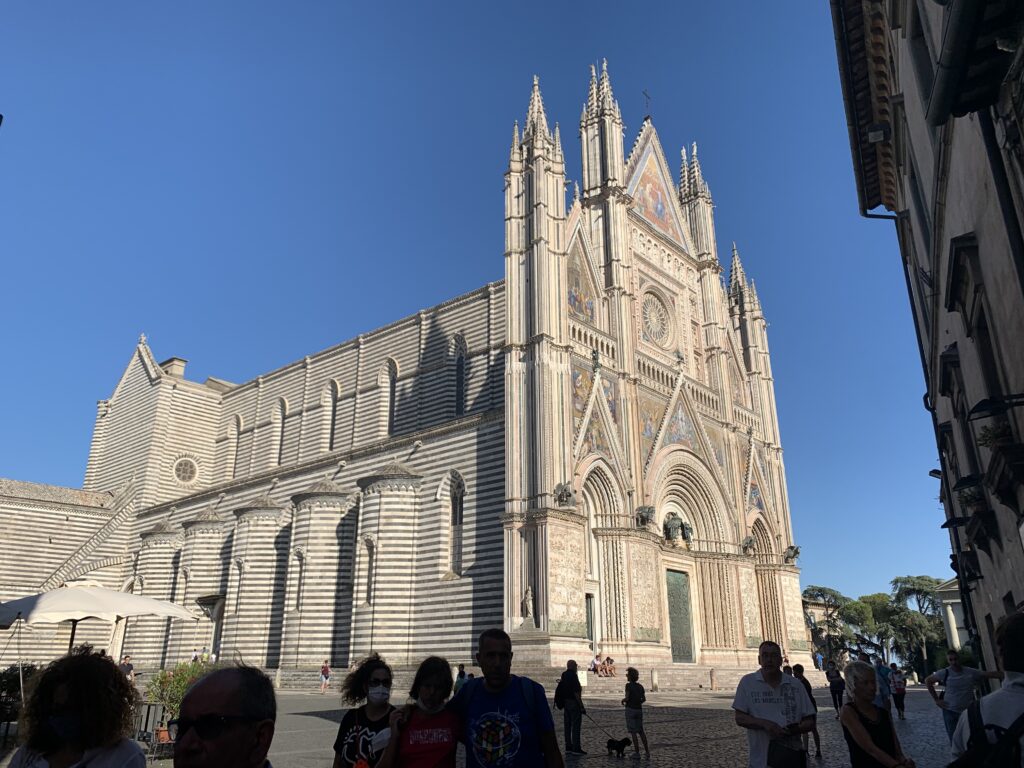
Historical Background
The Duomo, also known as the Cathedral of Santa Maria Assunta, began as a commission from Pope Nicholas IV in 1290. Its construction was inspired by the Miracle of Bolsena, an event in 1263 where a consecrated Host reportedly began to bleed during Mass, leading to the establishment of the Feast of Corpus Christi. He decided to build the Duomo to honor this miracle and to house the relic of the Corporal of Bolsena.
Over nearly three centuries, the Duomo evolved through the contributions of various architects and artists, most notably Arnolfo di Cambio and Lorenzo Maitani. The result is a harmonious blend of Gothic and Romanesque styles that showcases the artistic and engineering prowess of the medieval period.
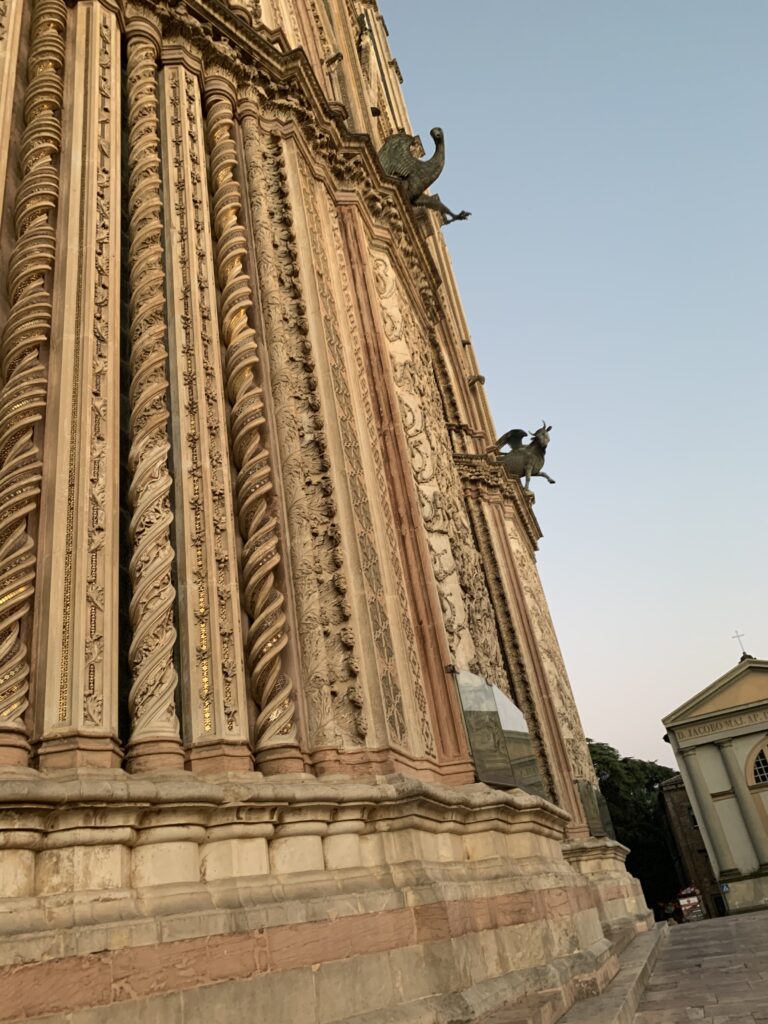
The Façade: A Gothic Masterpiece
The Duomo’s façade is a visual feast, adorned with intricate mosaics, bas-reliefs, and sculptures. Designed primarily by Lorenzo Maitani, the façade features a dazzling array of biblical scenes, saints, and symbolic figures. The mosaics, crafted with shimmering gold and vibrant colors, depict key moments from the lives of the Virgin Mary and Christ, captivating visitors with their beauty and spiritual depth.
Central to the façade is the rose window, surrounded by statues of the twelve apostles. This iconic feature enhances the aesthetic appeal of the cathedral. It also reflects the medieval belief in the power of religious art to inspire faith and contemplation.
Before entering the Duomo be sure to take note of the magnificent bronze doors crafted by Emilio Greco in the 60’s. The subject of the central door was the Seven Works of Mercy. Figures of angels representing an ideal and natural beauty grace the two side doors. Due to Greco’s profound ties with Orvieto, the artist donated an important collection of his work to the city. This collection is permanently on exhibit next to the cathedral for which he had so passionately worked.
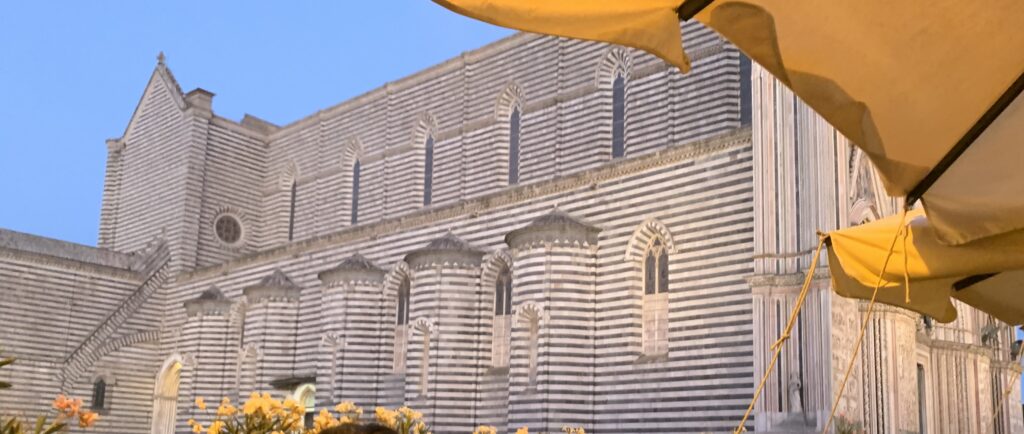
The Interior: A Sanctuary of Art and Worship
Upon entering the Duomo, visitors admire a vast and awe-inspiring interior. The cathedral comprises three naves with imposing columns, leading the eye towards the high altar and the magnificent frescoes adorning its chapels.
The Chapel of San Brizio is a highlight, featuring frescoes by Luca Signorelli. These works, depicting the Last Judgment and the Resurrection of the Flesh, are considered some of the finest examples of Italian Renaissance art. Signorelli’s use of color, perspective, and human anatomy brings these apocalyptic scenes to life, leaving a lasting impression on all who view them. His work in the Chapel likely inspired that of Michelangelo’s in the Sistine Chapel.
Another significant feature is the Chapel of the Corporal, which houses the sacred relic of the Corporal of Bolsena. The chapel’s frescoes and altarpiece narrate the story of the miracle, providing a space for reflection and reverence.
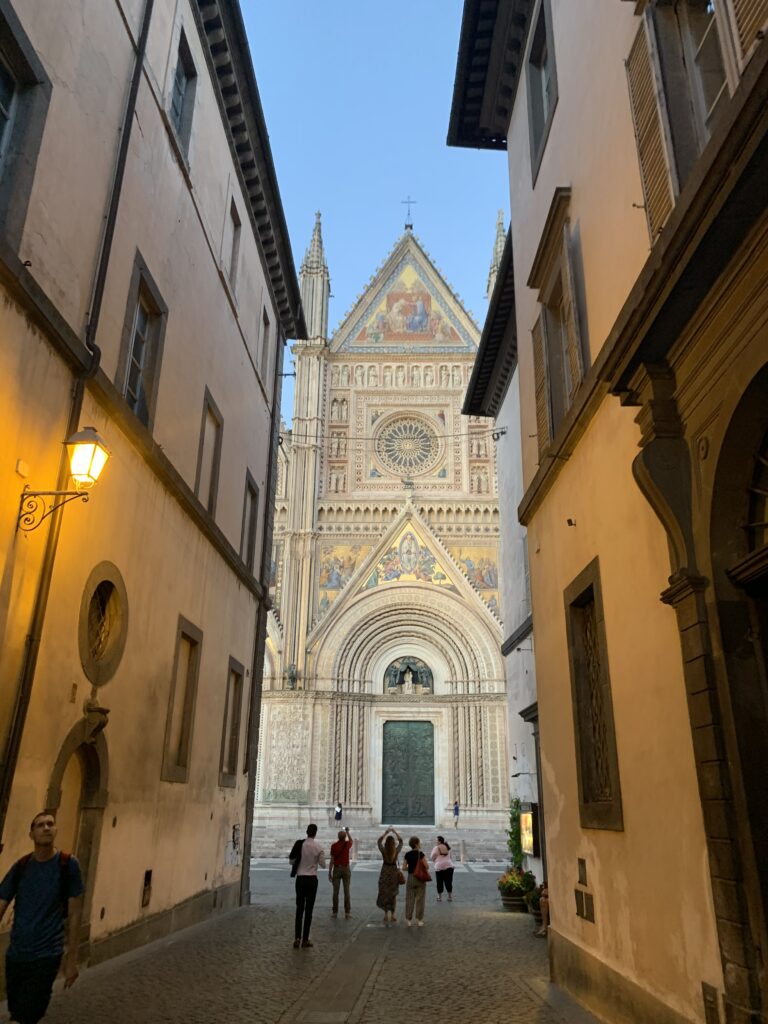
Visiting the Duomo: Tips to Enhance Your Visit
- Opening Hours: The cathedral is generally open to visitors starting at 9:30 – 19:00, but hours can vary during Sundays, religious events, or Holidays. It is always best to check in advance.
- Admission: There is an entrance fee of € 5,00, which includes access to the cathedral and its chapels. Guided tours are available and highly recommended for those wishing to gain deeper insights into the history and art of the Duomo.
- Dress Code: As with all places of worship, appropriate attire is required. Shoulders and knees should be covered as a sign of respect. If you happen to forget, a shawl will be provided for you by staff.
- Photography: Flash photography is not allowed inside the cathedral.
- Location: The Duomo is roughly a 5-8 minute walk from Palazzo Misciatteli towards the city center.
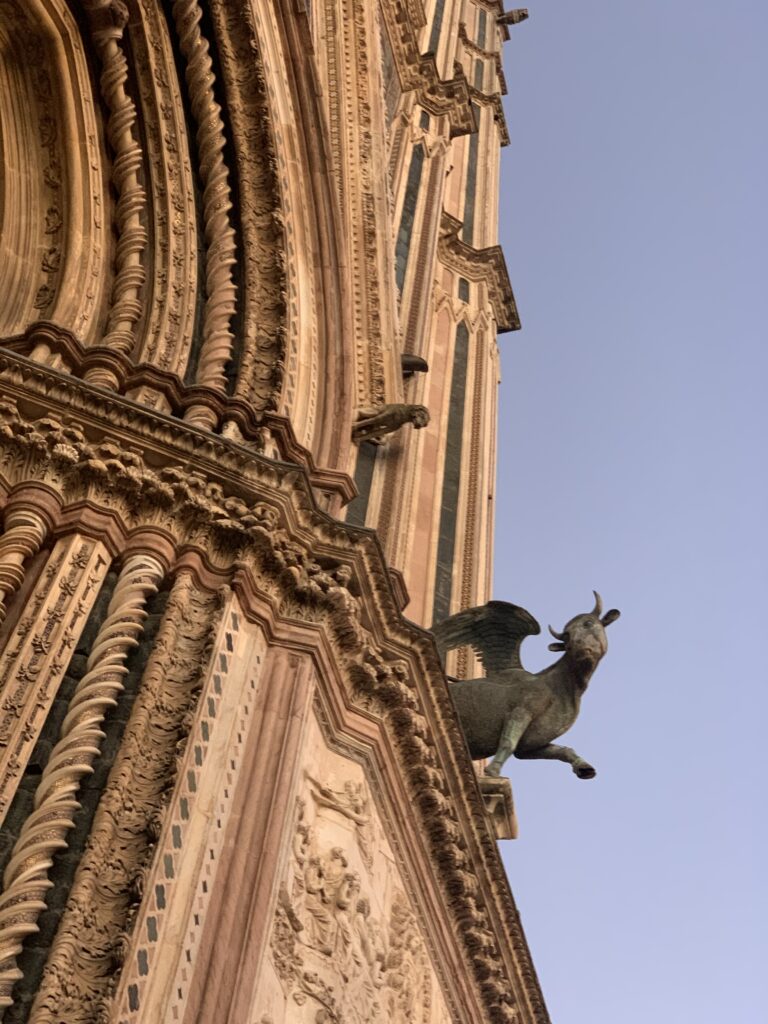
Palazzo Misciattelli is a small boutique hotel, an urban haven of contemporary luxury and ancient tradition, your exclusive retreat nestled atop the glorious clifftop city of Orvieto. All sites on the Carta Unica ticket are reachable within a 5-15 minute walk from the Palazzo.
Located halfway between Florence and Rome, the luxury residences are the perfect base for exploring Umbria, Tuscany, and the surrounding Unesco countryside.
Minutes by foot from the breathtaking Duomo and city center, the Palazzo is still privately owned by an ancient aristocratic Italian family. The four-story Palazzo spans 3000 years of history with visible Renaissance and Medieval elements atop Etruscan foundations.
Each luxury residence features opulent decor, sumptuous furnishings, and private living and dining areas. Boasting private gardens and terraces with glorious views, the Palazzo offers a sauna, plunge pool/jacuzzi, fitness room, roof terrace, and elevator. Guests have special privileges at the owner’s countryside properties where they can visit truffle forests, vineyards, and olive groves.
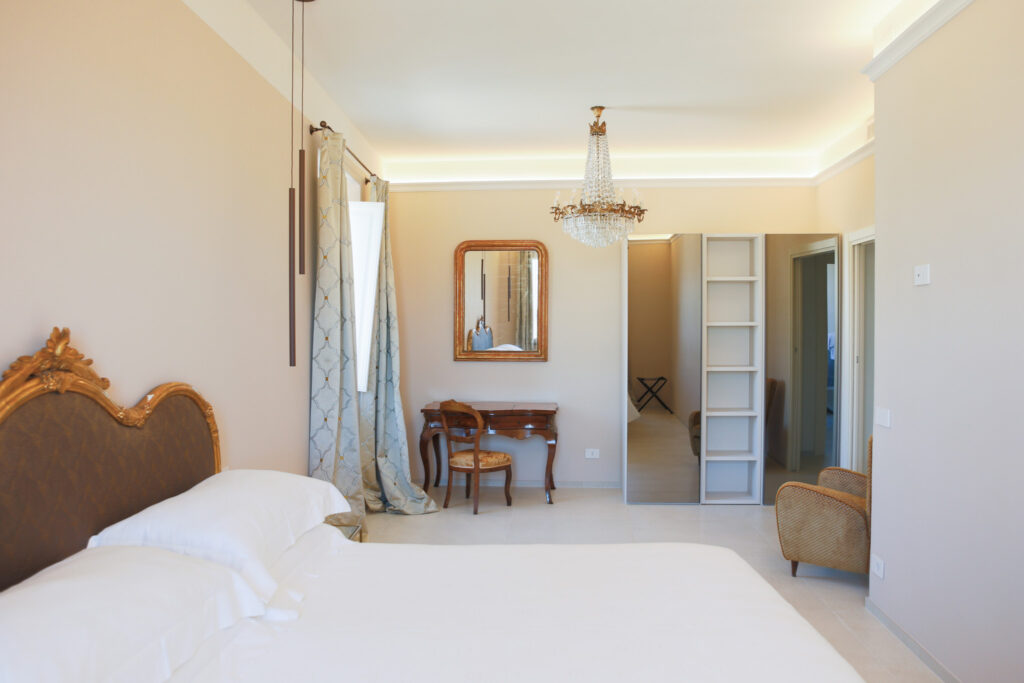
Carta Unica is a visitor ticket available for purchase online or in the ticket offices of Orvieto, granting access to many important sites in the city. Very few people are able to see all of the sites it offers in a stay of 3-4 days. Can you?

